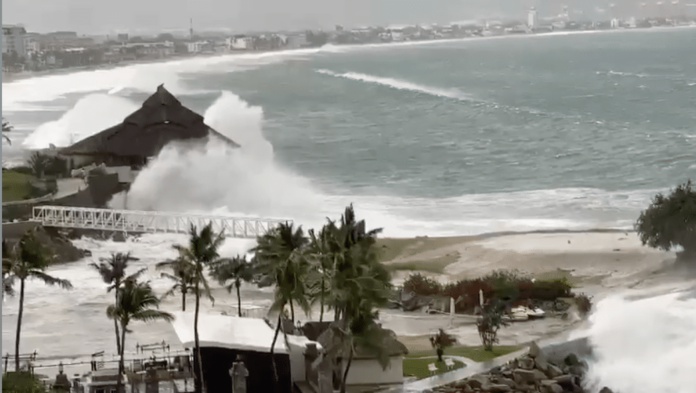An emerging El Niño pattern in the Pacific Ocean is expected to bring a greater amount of snowfall than usual to southern U.S. states, meteorologists are predicting, based on historical trends.
The phenomenon of a plume of unusually warm water in the sea—which has occurred periodically, but become more frequent with climate change as average ocean temperatures rise—is forecast to be particularly strong this coming winter, creating a north-south divide in weather patterns.
The National Oceanic and Atmospheric Administration (NOAA) declared the arrival of an El Niño in June, which contributed to the barrage of hurricanes and tropical storms in both the Atlantic and Pacific Oceans—including the first tropical storm to make landfall in California in recorded history.
“Depending on its strength, El Niño can cause a range of impacts, such as increasing the risk of heavy rainfall and droughts in certain locations around the world,” Michelle L’Heureux, a climate scientist at NOAA’s Climate Prediction Center, said at the time. “Climate change can exacerbate or mitigate certain impacts related to El Niño.”
In its latest advisory on the phenomenon, the National Weather Service said there was a 95 percent chance the current El Niño would strengthen and continue through to March next year, with the probability of a “strong” occurrence at 71 percent.
Given its apparent likelihood and persistence through the winter, Jonathan Erdman, a senior meteorologist at The Weather Channel, examined snowfall data across the U.S. since 1950 and found that in years where the ocean pattern was present, southern states tended to experience more snowfall and northern states less than on average.
This split tended to flip for La Niña seasons—the obverse of an El Niño, when Pacific Ocean temperatures tend to be lower than normal—with northern states seeing the most snow. In years when neither phenomenon is present, the snowiest parts tend to be eastern states from Missouri to Maryland.
“In general, the classic El Niño winter tends to be wetter than average through much of the southern U.S., from parts of California to the Carolinas, due in part to a stronger, more southern jet stream track,” Erdman explained. “Across much of the northern U.S., a stronger El Niño tends to produce a warmer winter.”
Source: Newsweek






